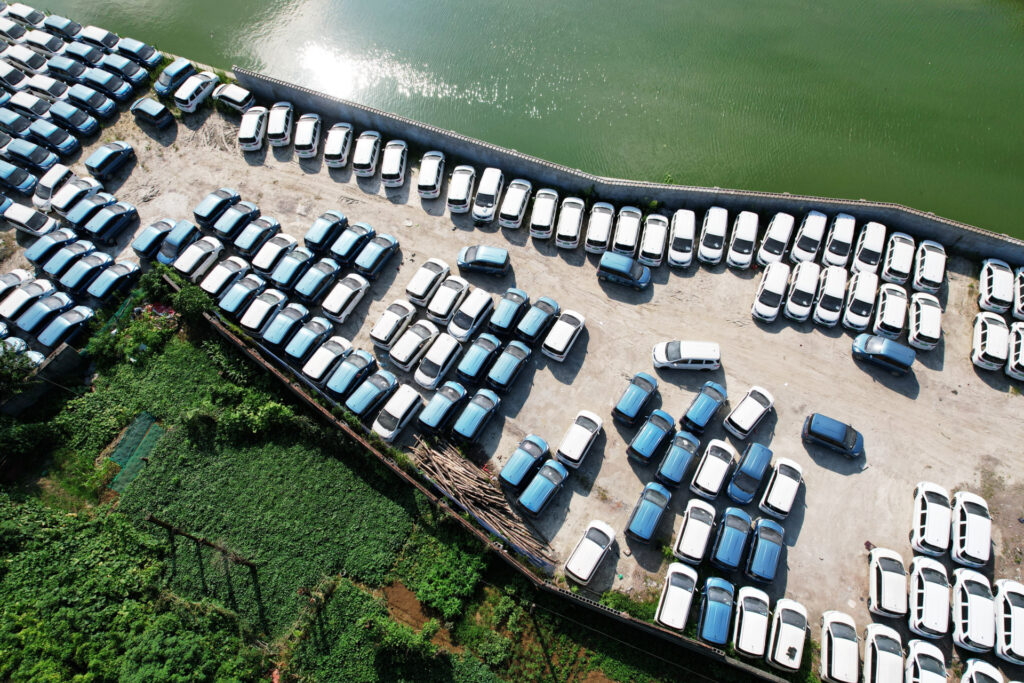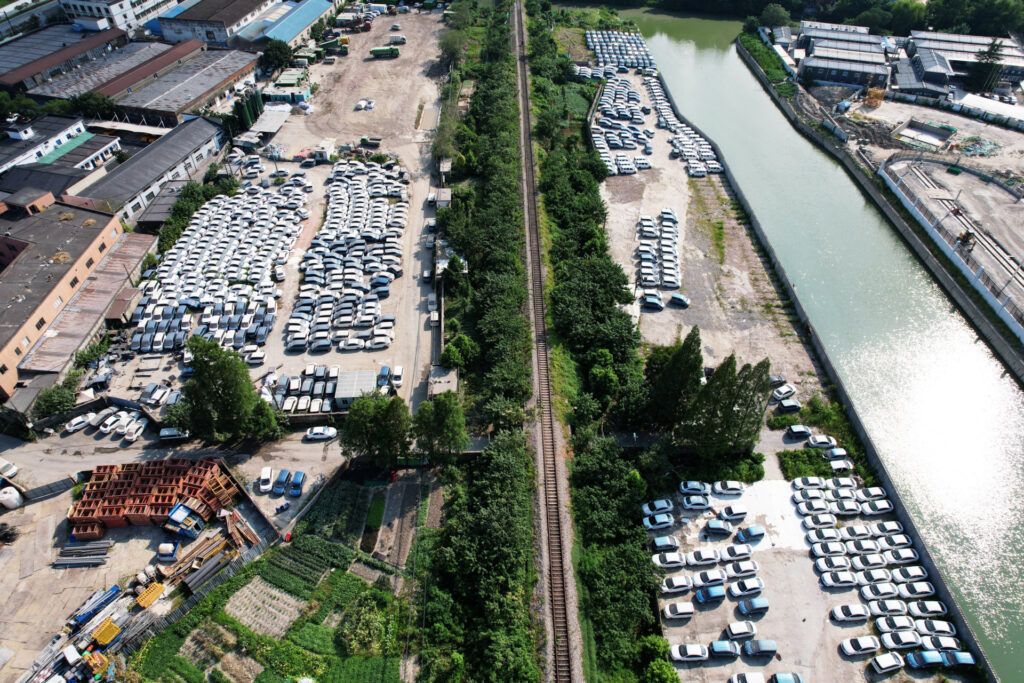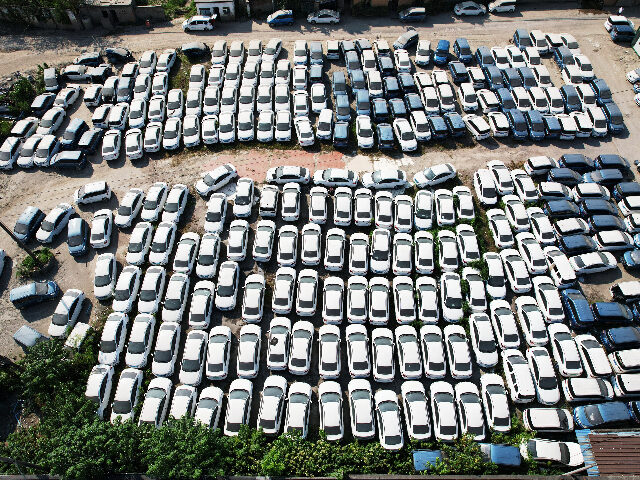Reporters from Bloomberg News tracked down one of China’s fabled electric vehicle (EV) graveyards on Friday, a vast lot near the city of Hangzhou where hundreds of discarded EVs are rotting away, covered with weeds and cobwebs.
Reporter Dan Murtaugh wrote.:
These cars were mostly no-frills EVs with batteries that would be lucky to get more than 100 kilometers (62 miles) on a charge. They were built in the mid-2010s, when generous government subsidies lured hundreds of automakers into the field, and purchased by ride-hailing companies less concerned about long-term quality.
Murtaugh was willing to excuse the astonishing waste of materials to some degree, arguing that EV technology has advanced so rapidly over the past decade that older models became obsolete. These forgotten vehicles have little value on the secondary market, and there is not much demand for spare parts.
On the other hand, China’s huge Sargasso Seas of discarded EVs — there are many others besides the lot in Hangzhou — are a bit inconvenient for the common EV talking point that the massive amounts of carbon emitted in their manufacture will be offset by many years of reduced-emission service.
Murtaugh also found it curious that the Chinese made no effort to recycle the obsolete EVs, not even to recover the lithium used in their batteries.
Bloomberg reported last week that satellite photos have revealed at least half a dozen EV graveyards across China. Some of the cars were abandoned so suddenly that personal items, such as children’s toys, could still be seen in the back seats — a detail that is difficult to reconcile with theories that the cars were abandoned because the owners ran out to buy newer models or because they belonged to rental fleets.
By subscribing, you agree to our terms of use & privacy policy. You will receive email marketing messages from Breitbart News Network to the email you provide. You may unsubscribe at any time.

A drone photo shows a car “cemetery” formed by nearly 1000 new energy vehicles in an open space in the north of Hangzhou, Zhejiang Province, China, July 28, 2021. (Costfoto/Future Publishing via Getty Images)
Analysts told Bloomberg the early adopters of EVs in China were mostly ride-hailing companies rather than individual private owners. These corporate purchases created a wave of demand that supposedly established EVs in China much more solidly than sputtering sales to consumers in the United States:
China is now the world leader in clean cars, producing around 6 million EVs and plug-in hybrids last year, or almost one in every three new cars sold domestically. It accounts for 60% of the world’s current electric fleet, and has the most extensive EV charging infrastructure on Earth — also built with government support.
But that lightning-fast development also left behind plenty of casualties. Many of the ride-hailing companies that were early adopters of EVs have gone out of business. There are now around 100 Chinese electric-car makers, down from roughly 500 in 2019.
None of that explains why China did not recycle the vehicles for valuable rare-earth metals, a deficiency Bloomberg admitted was disturbing for an industry that ostentatiously prides itself on being Earth-friendly. Some of those EV graveyards hold thousands of rusting cars, and Chinese officials have been promising to clean them up for years.
Bloomberg noted some of those EV-happy ride-hailing companies looked like excuses to make huge inventories of unwanted electric cars disappear. Others appeared to be rackets cooked up to absorb the huge subsidies doled out by the Chinese government. Even Chinese state media, which tends to understate embarrassing details, reported over a billion dollars in EV subsidy fraud in 2016.
The bottom dropped out of this phantom industry when China’s economy began faltering, and subsidies had to be cut. The EV graveyards began appearing almost immediately after the subsidies were slashed. Absolutely no one in the Chinese government was willing to answer Bloomberg’s questions about them.

A drone photo shows a car “cemetery” formed by nearly 1000 new energy vehicles in an open space in the north of Hangzhou, Zhejiang Province, China, July 28, 2021. (Costfoto/Future Publishing via Getty Images)
Several previous investigations of Chinese EV graveyards have sparked spirited debates among industry watchers. When drone photos revealed the tremendous size of the abandoned lots and depicted orderly ranks of nearly identical vehicles, some observers accused Chinese automakers of producing and abandoning cars to pad their sales numbers. Others argued that the bulk of the abandoned vehicles dated to the crash of the EV ride-sharing industry. A few people mistakenly captioned photos of Chinese graveyards, like the one in Hangzhou, and claimed they were located in Europe.
Some Western EV manufacturers do have a problem with unsold inventories piling up, but they have not resorted to tossing them in weed-choked abandoned fields. In July, Ford dealers complained that the company was pumping out EVs far out of proportion to consumer demand, sometimes failing to produce enough of the models that were selling well to produce unwanted models.
AutoEvolution pointed out:
The truth is that the situation is not limited to Ford but possibly all legacy carmakers. A recent Cox Automotive survey showed that EV inventory climbed to 92 days in the second quarter, up from 36 days a year earlier. This indicates that although production increased, sales are actually down for everyone except Tesla.
AutoEvolution noted in July that even as Ford triumphantly reported record numbers of EVs shipped to dealers, sales were actually down in the second quarter despite massive government subsidies for buyers. Ford established a program that would allow Uber drivers to lease unwanted EVs at deep discounts — which sounds like an ominous echo of China’s ride-sharing EV debacle.

COMMENTS
Please let us know if you're having issues with commenting.